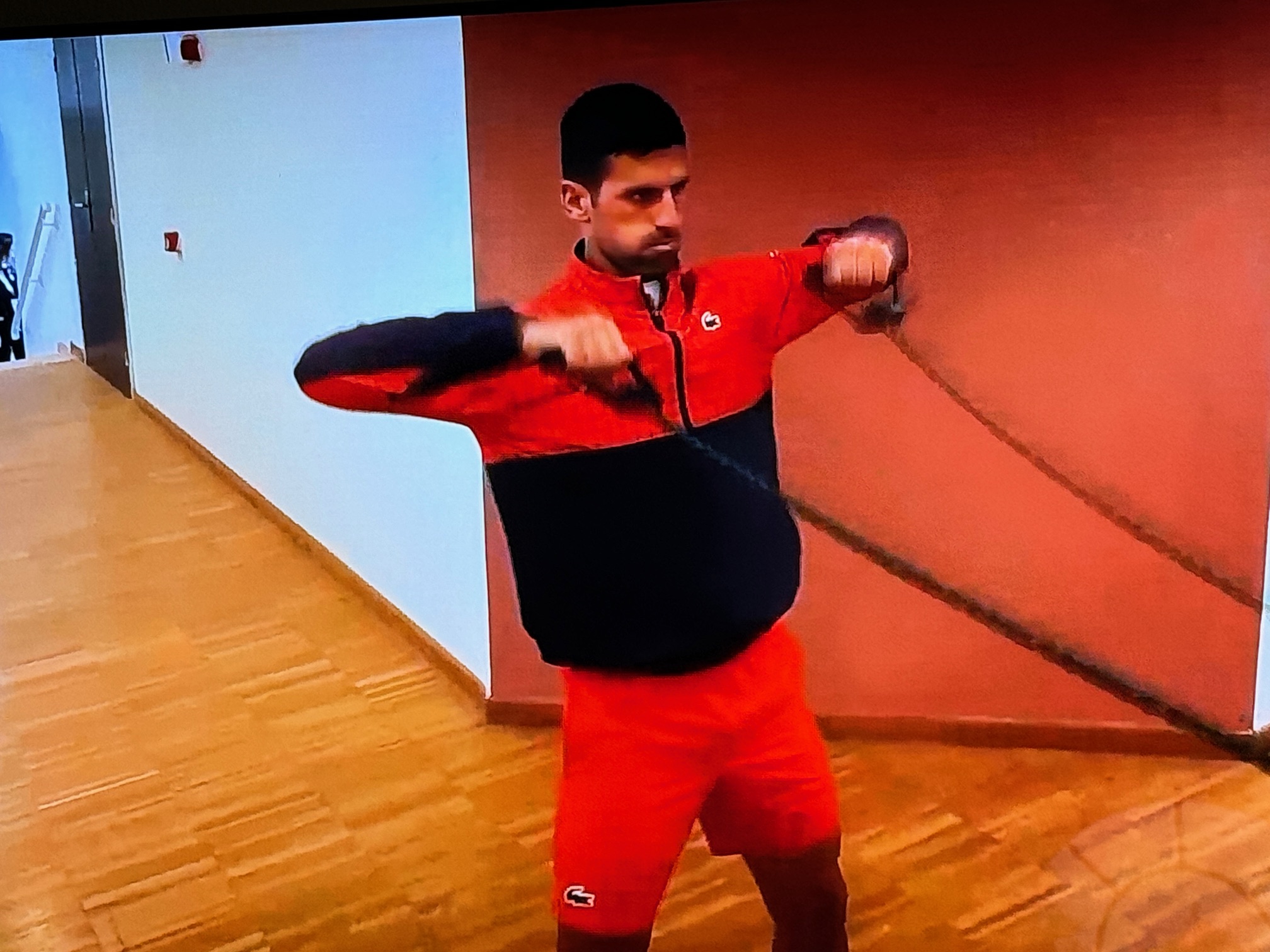Tennis Technology Tuesday
One key difference between USTA league and tournament match play is that in a tournament you generally have some amount of advance notice of who your opponent will be. In league play, players generally do not know who they are playing until the rosters are exchanged. The net result of that is that the scouting report culture is very different between leagues and tournaments.
That is not to say that scouting reports do not happen in leagues. It is just usually faster and bounded by the immediate knowledge of teammates who are present for the match. I have walked up to my league match court in time to overhear the phrase “… (*expletive*) drop shot.” That is most definitely a key phrase in the scouting report on me.
In tournaments, there is time to cull through a player’s history for a matchup against someone I know who can offer a scouting report. Some players are better at providing useful information than others. The ability to accurately assess player characteristics and tendencies is an art.
In the “pot, kettle, black” department, I don’t think that I am very good at offering generalized scouting reports. My knowledge tends to be pre-processed into how my specific shots and tactics work on the other player. An assessment of how another player responds to a drop shot is extremely valuable to me, but not so much to a player that doesn’t hit that shot. I am consciously working to improve my generalized tennis observations.
Professional Tennis Analytics
During the second week of the US Open this year, the Compete Like a Champion Podcast ran an interview with two members of the USTA Player Development Analytics Team. I embedded a link to the entire episode at the end of this post. It is worth a listen to anyone who is interested in how the upper echelons experience scouting reports.
The USTA Player Development Team provide analytic support to every professional American player. From a data availability standpoint, their services boil down to players in the top 300. In 2019, the team provided some level of support to 110 American players.
I would think that knowledge that this service exists would be a powerful incentive for players with nationality options to declare as American. For example when Naomi Osaka decided to play under the Japanese flag, she was giving up access to the services of the USTA player development team. It has probably worked out OK for her.
Enumerating the Analytics
The scouting information is provided across two primary dimensions. The first is scouting information on the foreign players. The second is the same information on the player themselves. That data is of obvious use to guide a player’s own development as well as developing tactics and strategies for upcoming opponents.
The USTA team purchases reports and outsources some of the analytics to 3rd party analytics companies. They also have internal libraries and databases with tagged statistical data. That information is processed into a report by a script. The analytics team themselves reviews the report to ensure that key nuggets are highlighted appropriately.
The interview in the podcast episode confirmed something that I had been surmising. The Hawk-Eye system is being used to collect a tremendous amount of analytic data. The Hawk-Eye reports are emerging as the gold standard for 3rd party analytic services.
Analytics Applications
One of the most potentially value added services of the USTA Player Development lies within the relationships developer with the player’s coaches. This leads to an ability to tailor the reports and analytics to the most useful form that will be useful to the coach and player.
As a contrast in style, Alex Kenin wants three key things to help him prepare his daughter Sophia for upcoming matches. On the other hand Jay Berger, coach of Riley Opelka, wants every detail possible so be can sort through the information to identify the key factors to emphasize himself.
The analytics team also had some interesting observations on the lack of energetic play from Frances Tiafoe in his last match at the US Open. The data revealed that Tiafoe’s previous matches had created a lot of load on his legs. He simply did not have the energy to compete in that final match. The actionable intelligence from the US Open data is that Tiafoe needs to step up his endurance training.
Analytics Results
American Jennifer Brady has invested considerable time with the USTA player development analytics team, using the data to recognize that she needed to improve the consistency of her backhand as well as her footwork and conditioning levels. Based on her results at the US Open, translating that knowledge into effective training of those factors produced dramatic results.
On the other hand, since the podcast was recorded prior to the end of the US Open tournament, the analytics team predicted the winners of the tournament. They were wrong on both counts. Analytics can provide an edge, but the outcomes ultimately come directly off the racquet.



